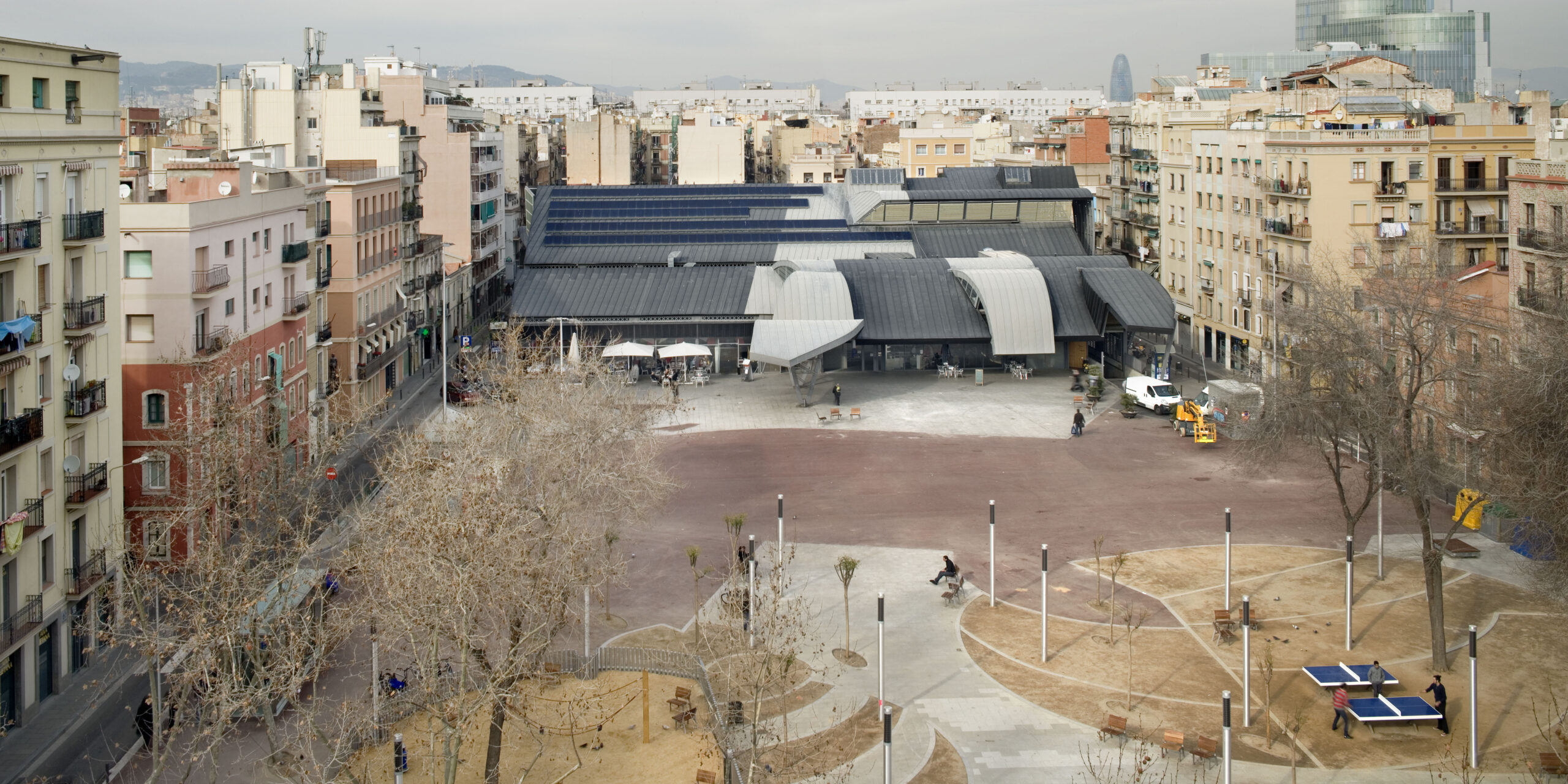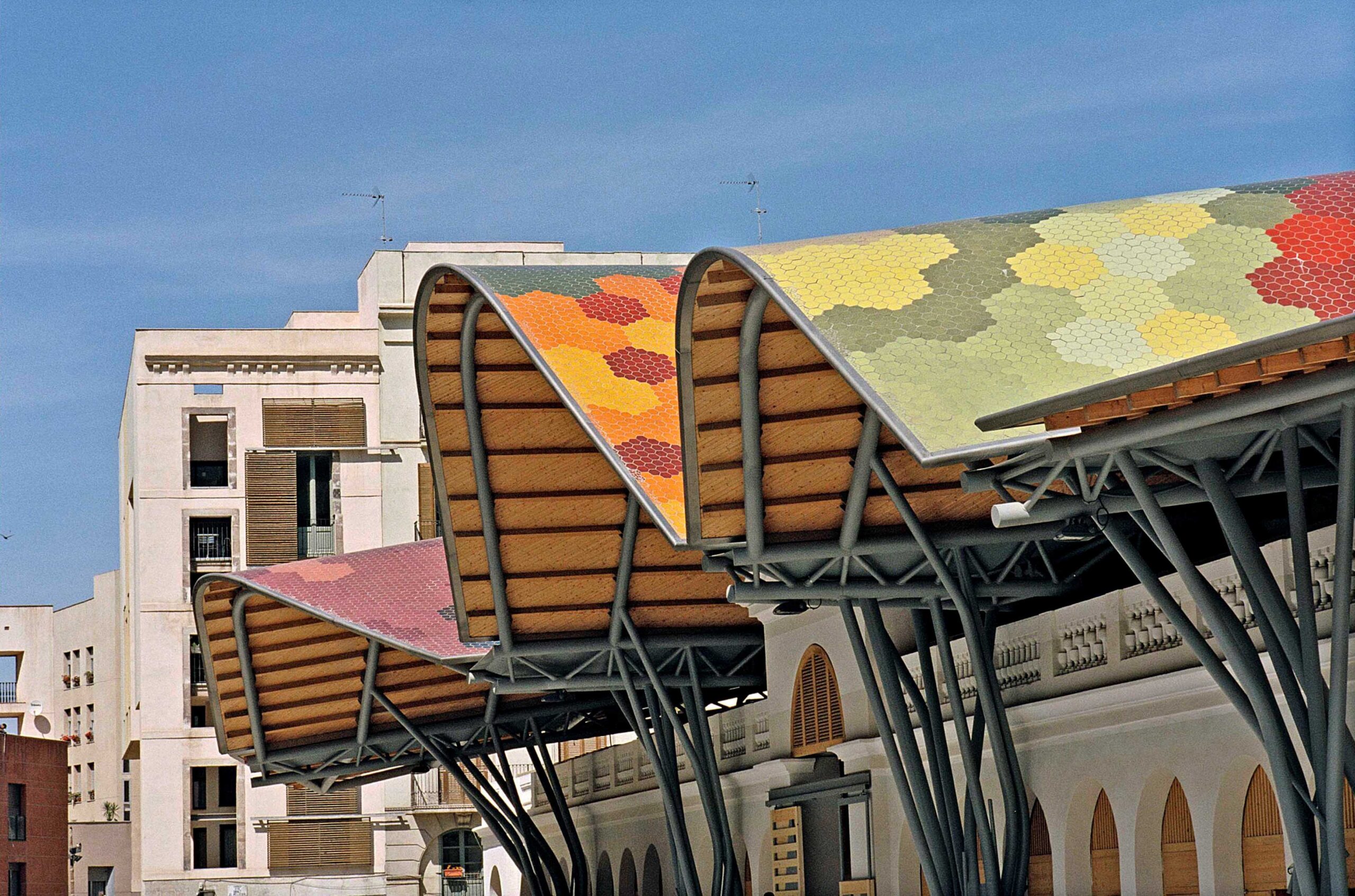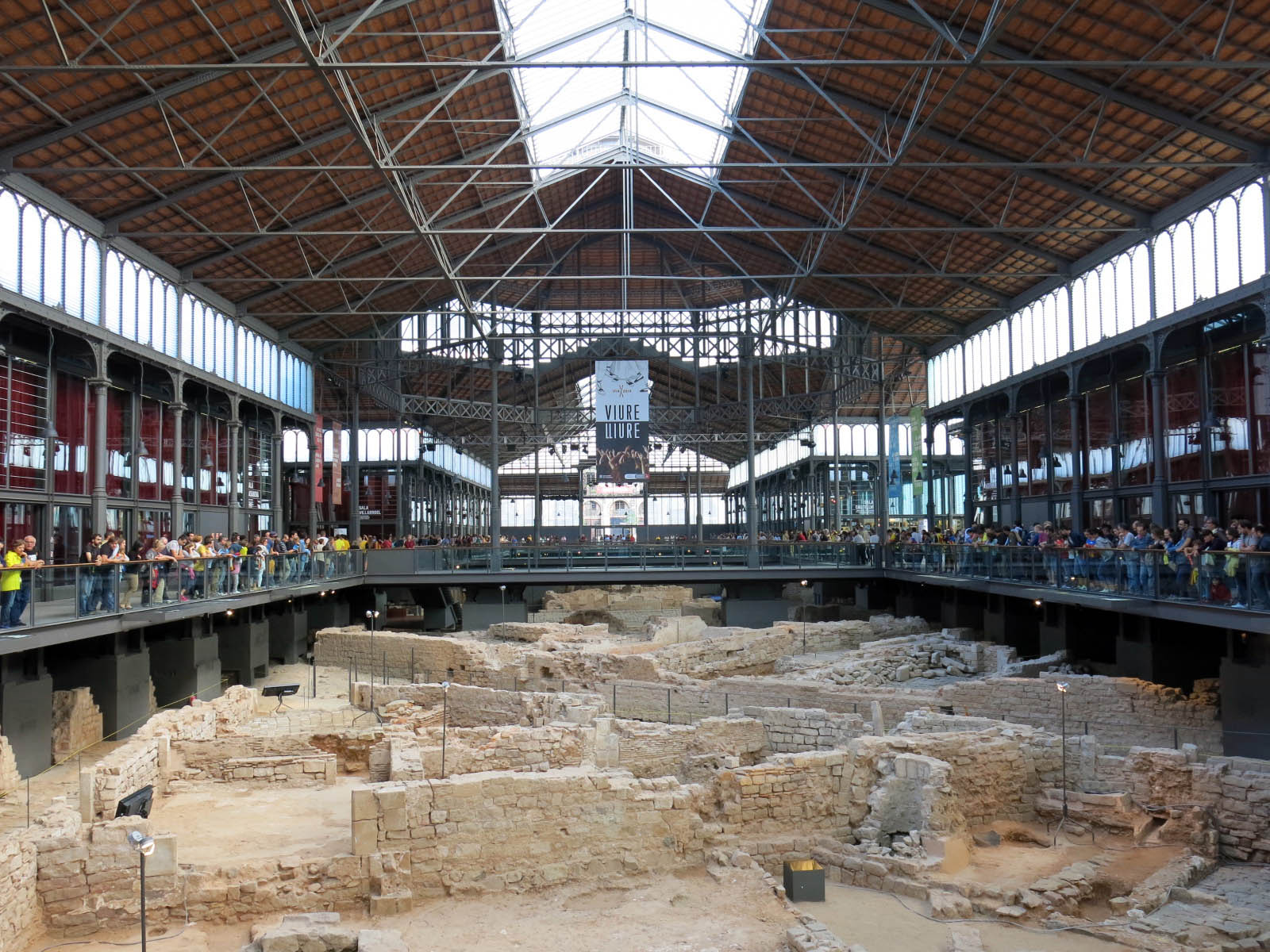The countdown to 13th Annual A+Awards winners’ announcement has begun! Stay updated by subscribing to Architizer’s Awards Newsletter.
Traditional food markets, with their bustling stalls, have long been the heart of urban life worldwide. Barcelona’s food markets are no exception, being much more than places to buy fresh food; they are vibrant venues that reflect the city’s social and cultural identity. The Catalan expression “Anar a comprar a la plaça” translates to “going to the main square to buy groceries.” This expression harkens back to a time when farmers set up their temporary stalls to sell fresh goods, and neighbors met to shop and catch up on their lives. Over time, these open-air markets became more organized, leading to the construction of the market structures we know today.
Barcelona’s traditional markets are celebrated for their distinctive cast iron designs, a construction technique that emerged during industrialization and a renewed focus on urban planning and city hygiene. It presented advantages for public buildings, including structural strength and durability suitable for heavy use, and provided a safe, fire-resistant environment for large crowds. Despite the evolution, moving the markets from an outdoors to an indoor setting, the expression “anar a comprar a la plaça” remained popular, carrying cultural and historical significance.
Today, food markets across the city are undergoing extensive restoration and upgrading work. Their cultural relevance has led the city to preserve them as historic landmarks and integrate them as key features of the urban fabric, where commercial activity merges with street life. The restoration efforts often focus on improving the public spaces surrounding the markets to enhance social activity. These markets serve as microcosms that embody the spirit of their neighborhoods.
The Enduring Legacy of Barcelona Food Markets
Mercat Galvany. Barcelona, Spain. | Photo by Joe Shlabotnik via Flickr.
Barcelona’s traditional food markets are architectural and urban landmarks that combine historic heritage with modern functionality. Barcelona officially has 39 food markets under the municipal banner, all of which are essential venues for fresh produce, culinary traditions and community interaction.
While some contemporary market structures were constructed to meet the evolving needs of the city’s residents and visitors, most of them were built in the 19th and early 20th centuries. These early markets often showcase striking iron-and-glass structures like the Mercat de Sant Antoni and Mercat de la Boqueria; others boast intricate brickwork, like the Mercat del Clot, characteristic of Catalan Modernism. They are remarkable architectural marvels that enhance the shopping experience, blending history and contemporary city life.
The Evolving Role of Markets as Community Hubs

Barceloneta Market and Public Space by Mias Architects. Barcelona, Spain | Photo by Adrià Goula.
Barcelona markets are vibrant neighborhood venues, strategically distributed across the city. They are integrated into the urban fabric, often located in central squares or along main streets, acting as focal points for community life.
Renovation efforts have preserved their architectural heritage and upgraded them with new technologies and improved logistics. The market model, which traditionally served solely for the commerce of fresh goods, has evolved to incorporate mixed-use spaces that complement food stalls, including restaurants, cafes, cultural venues and small shops. This adaptability ensures their continued relevance in Barcelona’s dynamic urban landscape.
The new market model improves the integration of the structures into the urban fabric, making the area around the markets less congested and improving accessibility. With multiple entry points that make the structures more inviting, these markets merge market and street activities. Generous open spaces around the markets facilitate pedestrian traffic and social engagement, featuring sitting areas and playgrounds that encourage community interaction. A good example of this integration is the Mercat de la Barceloneta, where a modern and emblematic design transforms a densely populated area into a vibrant and spacious gathering space.
Located in the Barceloneta neighborhood, known for its narrow streets and compact apartments, the new market and adjacent square are a breath of fresh air. While the neighborhood is by the sea, its urban fabric offers limited open space. The market’s renovation is conceived as an extension of the neighborhood, reflecting its lively spirit. A variety of food stalls, shops, halls, and restaurants foster commercial activity and social interaction. The concept of the market as an extension of the neighborhood is also expressed by its undulating canopies that extend toward the square. These canopies provide sheltered open spaces and contribute to a more inviting and accessible transition between indoors and outdoors.
Redefining Identity and Cultural Landmark: Mercat de Santa Caterina

Santa Caterina Market by Miralles Tagliabue EMBT, Barcelona, Spain | Photo by Alex Gaultier
These renovations have strengthened the commercial activity of food markets and enhanced their social appeal and unique identity. By capitalizing on the aesthetic appeal and cultural value of the cast-iron structures and brick buildings, these renovations preserve the city’s architectural heritage while improving functionality to meet the needs of contemporary users.
The Mercat de Santa Caterina in the city center, a stone’s throw from the Gothic Quarter, is a thoughtful renovation that preserves the market’s original brick and cast-iron structure while introducing new elements to create a distinctive market experience. The market’s new, colorful, undulating tile roof is undoubtedly an icon of Barcelona’s new architectural landscape.
Additionally, the discovery of a Roman necropolis and a 12th-century convent during the works has imbued the Mercat de Santa Caterina with a deep sense of history. The ancient remnants have been thoughtfully incorporated into the design, serving as a testament to Barcelona’s layered urban evolution. This integration strengthens the connection between the structure and its surrounding urban fabric and elevates the market from a mere commercial venue to a cultural landmark, enriching visitors’ experience.
Beyond the Traditional Food Market Model: Mercat del Born

Enfo, 100 Mercat del Born, excavacions arqueològiques de la Ribera, CC BY-SA 3.0 | Renovation project by the Barcelona City Council in collaboration with a team of architects and archaeologists (2013)
These examples demonstrate how the redefinition of the food market model has expanded activity beyond selling goods at stalls. The new market model is reimagined as an extension of the streets, incorporating cafes, shops, restaurants and cultural centers that add to the city’s vibrant lifestyle. Converting a traditional market into a venue where food stalls are not the primary focus is a unique approach. For example, the Mercat del Born has been transformed into a cultural center displaying layers of the site’s history. The facility highlights a museum dedicated to the archaeological remains dating from Medieval times to the early 18th century. The space also hosts exhibitions, educational programs and neighborhood events, while artisanal food stalls offering local specialties and gourmet goods bring together history, culture and gastronomy.
How Barcelona’s Markets Remain Relevant in the Supermarket Era?
Barcelona’s historic food markets have evolved through architectural renovations that modernize their infrastructure while preserving their original character. These projects go beyond mere restoration, reimagining markets as dynamic community hubs. Many renovations also enhance the surrounding public spaces, further integrating markets into the city’s urban fabric. Their historical value and strong popular support ensure their ongoing relevance in city life.
These improvements also help traditional markets remain competitive in an era of supermarkets and online shopping. The rise of supermarkets in Barcelona during the 1980s posed a significant challenge to traditional markets, drawing customers away. Interestingly, Barcelona’s market renovation strategy has incorporated supermarkets in many facilities rather than resisting this trend or allowing traditional markets to disappear.
More than two-thirds of Barcelona’s 39 food markets—including Mercat de Sant Antoni and Mercat de Santa Caterina—house supermarkets alongside traditional vendors. This approach, which combines the appeal of traditional markets with the practicality of supermarket offerings, attracts a broader customer base, generates rental income, and supports the city’s goal of keeping markets at the heart of neighborhoods, ensuring that residents continue to view them as essential shopping venues rather than vestiges of the past.
The countdown to 13th Annual A+Awards winners’ announcement has begun! Stay updated by subscribing to Architizer’s Awards Newsletter.
Top image: Canaan, Mercat S Antoni, CC BY-SA 4.0

